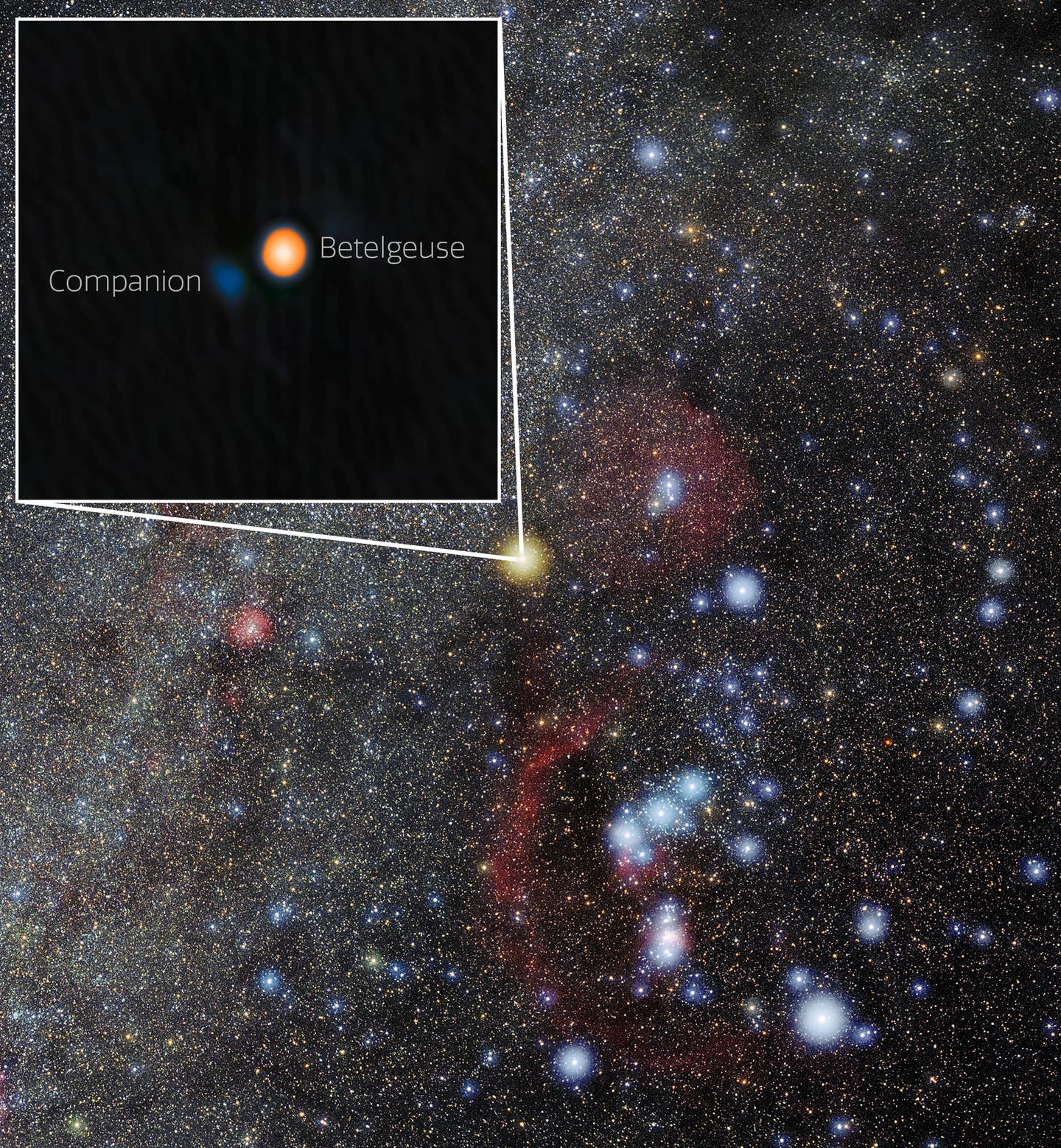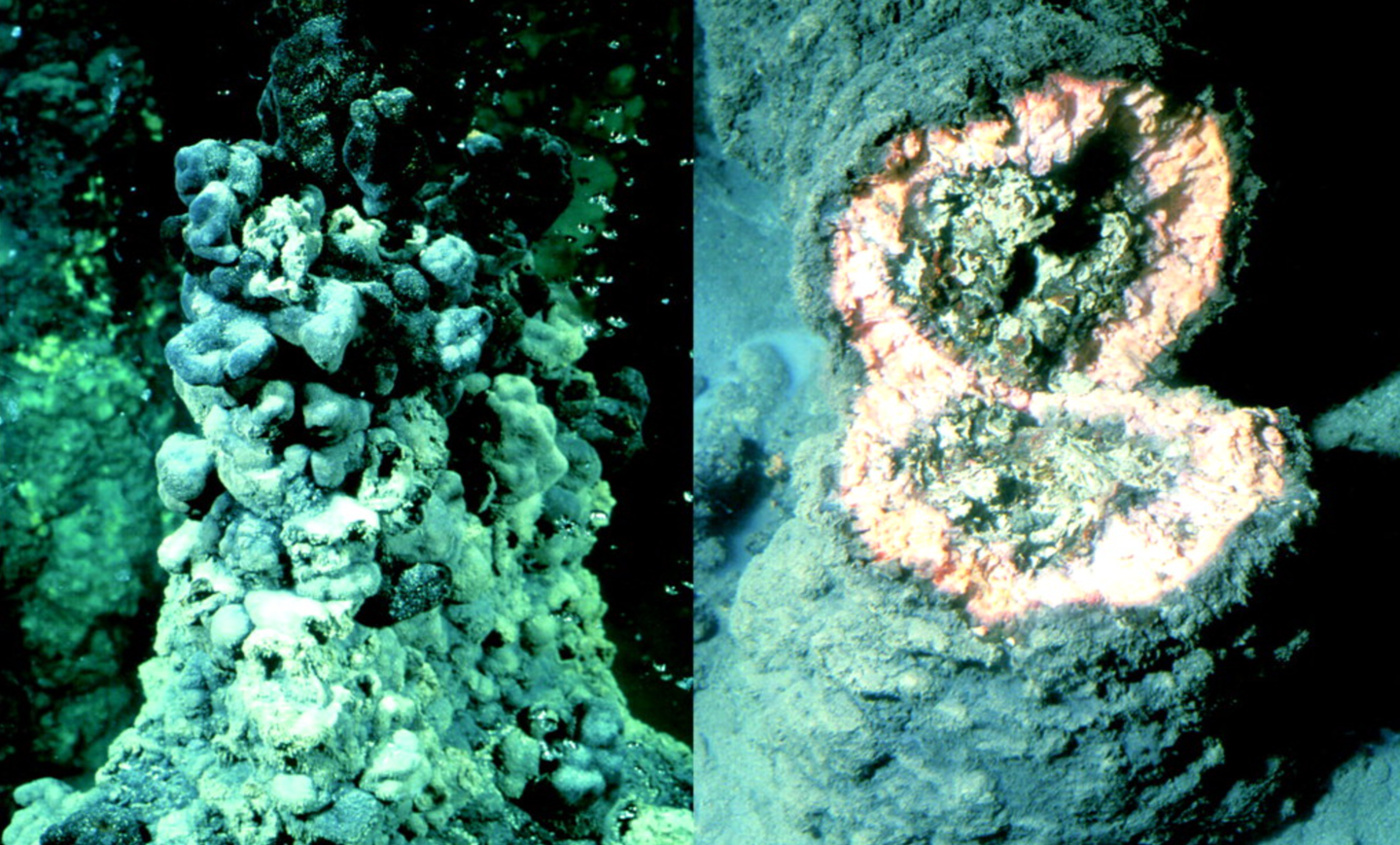Betelgeuse’s hidden companion star, Siwarha, discovered after a century of mystery
A century-old mystery surrounding Betelgeuse is solved as scientists confirm a hidden companion star using cutting-edge Earth-based telescopes.

Scientists confirm Betelgeuse’s hidden companion star after a century of mystery using high-res imaging from Gemini North. (CREDIT: International Gemini observatory / NOIRLab / NSF / AURA. Image Processing: M. Zamani (NSF NOIRLab))
For over a hundred years, astronomers have puzzled over strange changes in the brightness and motion of Betelgeuse, the closest red supergiant to Earth. Located in the shoulder of Orion, this colossal star has fascinated skywatchers for millennia.
Despite its youth—just ten million years old—Betelgeuse is already nearing the end of its life. Its surface constantly boils with giant convective cells, and it swells and shrinks every 400 days, altering its brightness. Yet there's a second, slower rhythm to the star’s changes—one that repeats every 5.78 years. That long-standing puzzle has now been solved.
A Clue Hidden in the Light
Historical records show scientists first suspected Betelgeuse had a companion as early as 1908. They noticed irregular changes in the star’s velocity and brightness, suggesting gravitational tugging by an unseen object. These suspicions, however, faded over time due to the star’s naturally chaotic surface and the lack of direct evidence. Betelgeuse’s intense glow and vast size—about 700 times the Sun’s radius—have long made it difficult to study anything nearby.
The turning point came when astronomers began analyzing over a century’s worth of radial velocity, astrometric data, and brightness measurements. These revealed a consistent, slower variation alongside Betelgeuse’s main pulsations. The longer-period cycle, lasting around 2,110 days, matched what’s known as a “long secondary period” or LSP—a phenomenon also seen in other red supergiants. But Betelgeuse’s LSP stood out.
Astrometric and velocity data together showed a pattern best explained by a small companion star orbiting Betelgeuse just over twice its radius away. Though it was nearly a million times dimmer and 20 times less massive, this star left behind unmistakable fingerprints in the data. The companion had gone unnoticed simply because it was hiding in plain sight—its faint light overwhelmed by Betelgeuse’s glare.
A Companion Star Named Siwarha
Recently, a breakthrough came from a team led by Steve Howell, a senior scientist at NASA’s Ames Research Center. Using a high-resolution speckle imaging system named ‘Alopeke—meaning “fox” in Hawaiian—they directly observed the elusive star for the first time. Mounted on the Gemini North telescope in Hawai‘i, ‘Alopeke captured thousands of ultra-short exposures to cut through Earth’s atmospheric distortion. This method allowed the team to clearly spot the faint object orbiting near Betelgeuse’s edge.
Related Stories
- Bright star Betelgeuse likely has a ‘Betelbuddy’ stellar companion
- Astronomers use ancient radio signals to detect the universe's first stars
- Milky Way’s center contains fewer stars — and now we know why
Named “Siwarha,” Arabic for “her bracelet,” the companion lives up to its name by appearing as a small adornment circling a giant. The data showed that Siwarha is about 1.5 times the mass of the Sun and roughly six magnitudes fainter than Betelgeuse in visible light. It’s likely a hot, blue-white A- or B-type star that hasn’t yet begun fusing hydrogen in its core.
This is the first time a close companion has been directly detected inside the extended atmosphere of a supergiant star. It orbits at a distance about four times greater than that between Earth and the Sun, yet still well within Betelgeuse’s outer layers. The discovery sets a new record for precision and clarity in observing massive stars and their hidden neighbors.
Tides, Spins, and a Slow Death
The orbit of Siwarha is more than a curious side note—it has real effects on Betelgeuse. Data suggest the orbit is aligned with Betelgeuse’s spin axis, a sign of powerful tidal interactions. These gravitational forces have likely sped up Betelgeuse’s rotation, explaining why the star spins faster than expected for its age and size.
But this orbital dance has a darker future. Over time, tidal forces continue to drain energy from Siwarha’s orbit, pulling it closer to the red supergiant. Eventually, the smaller star will spiral inward until it’s engulfed by Betelgeuse, an event expected to occur within the next 10,000 years. This cosmic consumption is a fitting end for a companion that has circled unnoticed for ages.
Astronomers believe Betelgeuse and Siwarha formed together. Though born at the same time, the smaller star will meet its end much sooner, a victim of its proximity to a dying giant. Understanding this final act can help scientists predict what happens when massive stars enter their final stages before exploding as supernovae.
A Century-Old Prediction Comes True
The theory that Betelgeuse had a binary partner dates back to the early 20th century, when early spectroscopic studies hinted at a second object. Over time, the chaotic behavior of the star’s surface—full of convective “hot spots,” radial pulsations, and dust ejections—cast doubt on this idea. The 2019–2020 Great Dimming, for example, was caused not by a supernova, but by a dust cloud ejected from Betelgeuse, temporarily blocking its light.
But the mystery sparked renewed interest. Scientists revisited old data, searching for any pattern that could prove the existence of a companion. Some teams ruled out known causes of LSPs—like convection or outer-layer pulsations—and returned to the binary hypothesis. When predictions from these studies gave a narrow window for observing the companion, Howell’s team seized the opportunity with Gemini North.
Previous space telescopes like Hubble and Chandra failed to detect the companion because they could not overcome Betelgeuse’s glare. Ground-based observatories, equipped with the right tools, have now stepped in to do what once seemed impossible.
“This detection was at the very extremes of what can be accomplished,” Howell explained. “It now opens the door for other observational pursuits of a similar nature.”
What Comes Next
This discovery helps explain why many red supergiant stars show similar long-period brightness changes. Their variability might not come from within, but from the tug of a hidden partner. The next chance to observe Siwarha in its widest orbit comes in November 2027, when it will again be easier to detect. Howell and his team plan to continue tracking its motion to learn more about its nature and how it interacts with Betelgeuse.
Martin Still, a program director at the National Science Foundation, sees this as a defining moment. “Delivering the solution to the Betelgeuse problem that has stood for hundreds of years will stand as an evocative highlight achievement,” he said.
The discovery is not just about one star. It proves that advanced imaging methods from Earth can solve long-standing astronomical mysteries. It also shows that some of the universe’s best secrets are hiding in plain sight, waiting for the right tools—and minds—to reveal them.
Note: The article above provided above by The Brighter Side of News.
Like these kind of feel good stories? Get The Brighter Side of News' newsletter.



